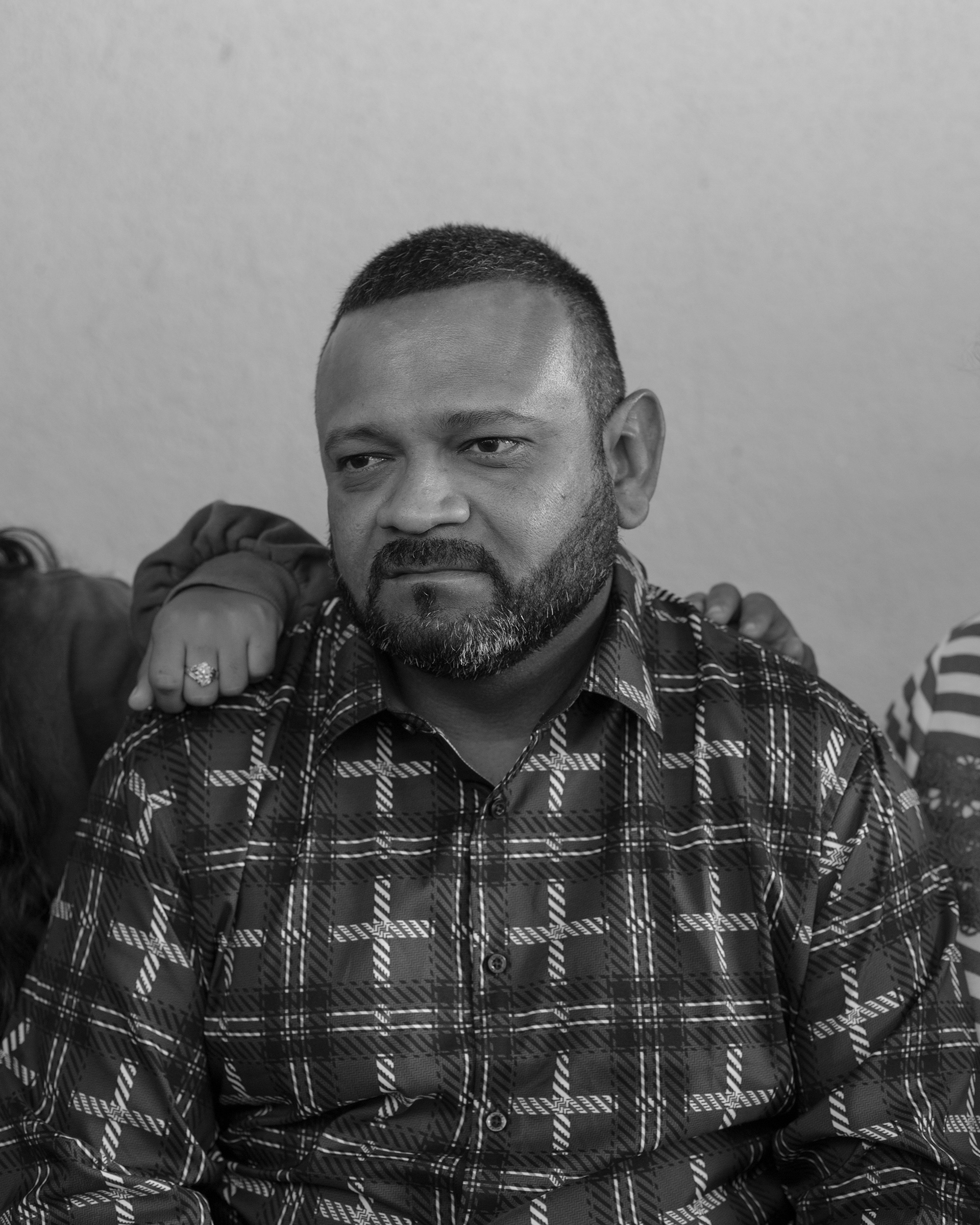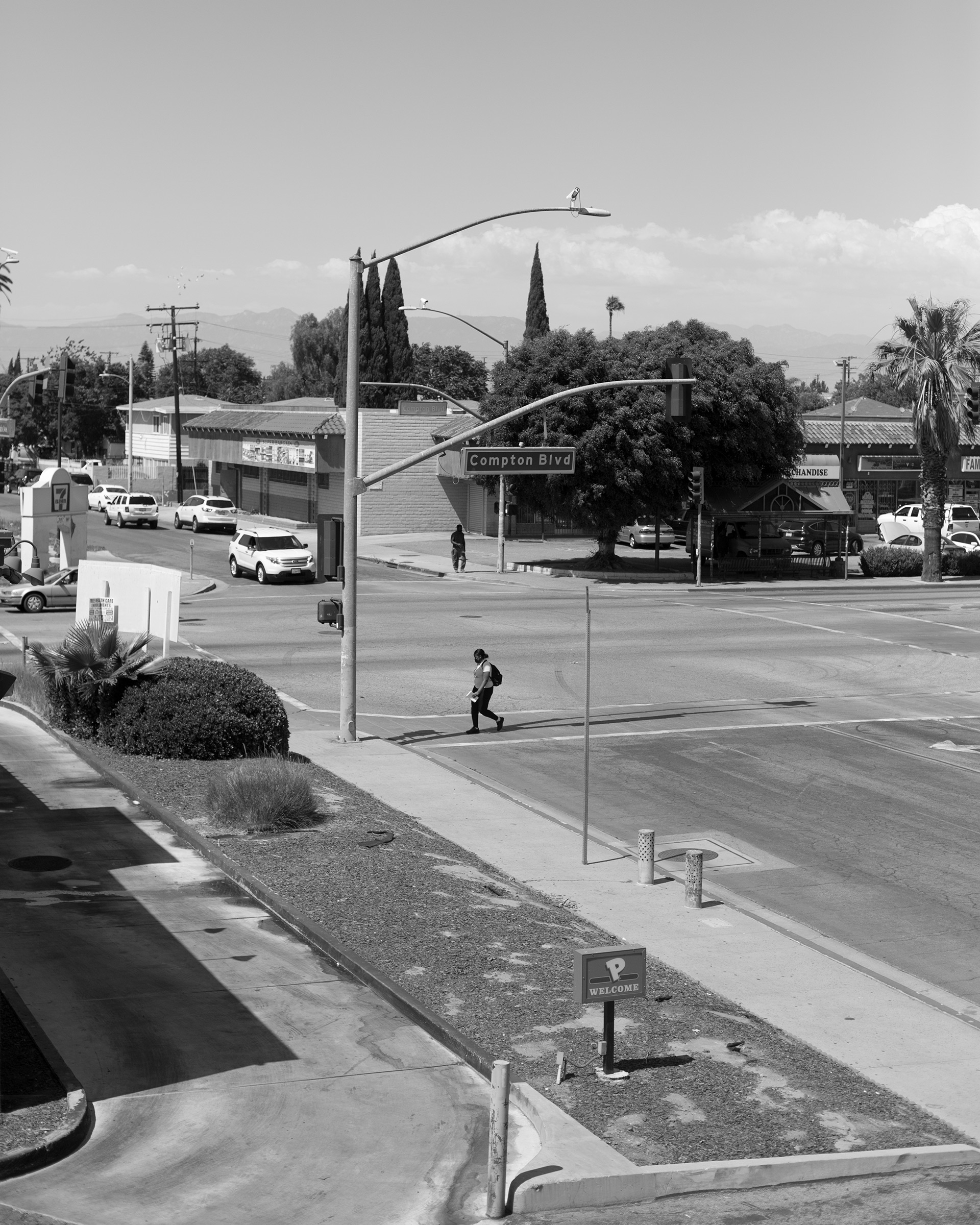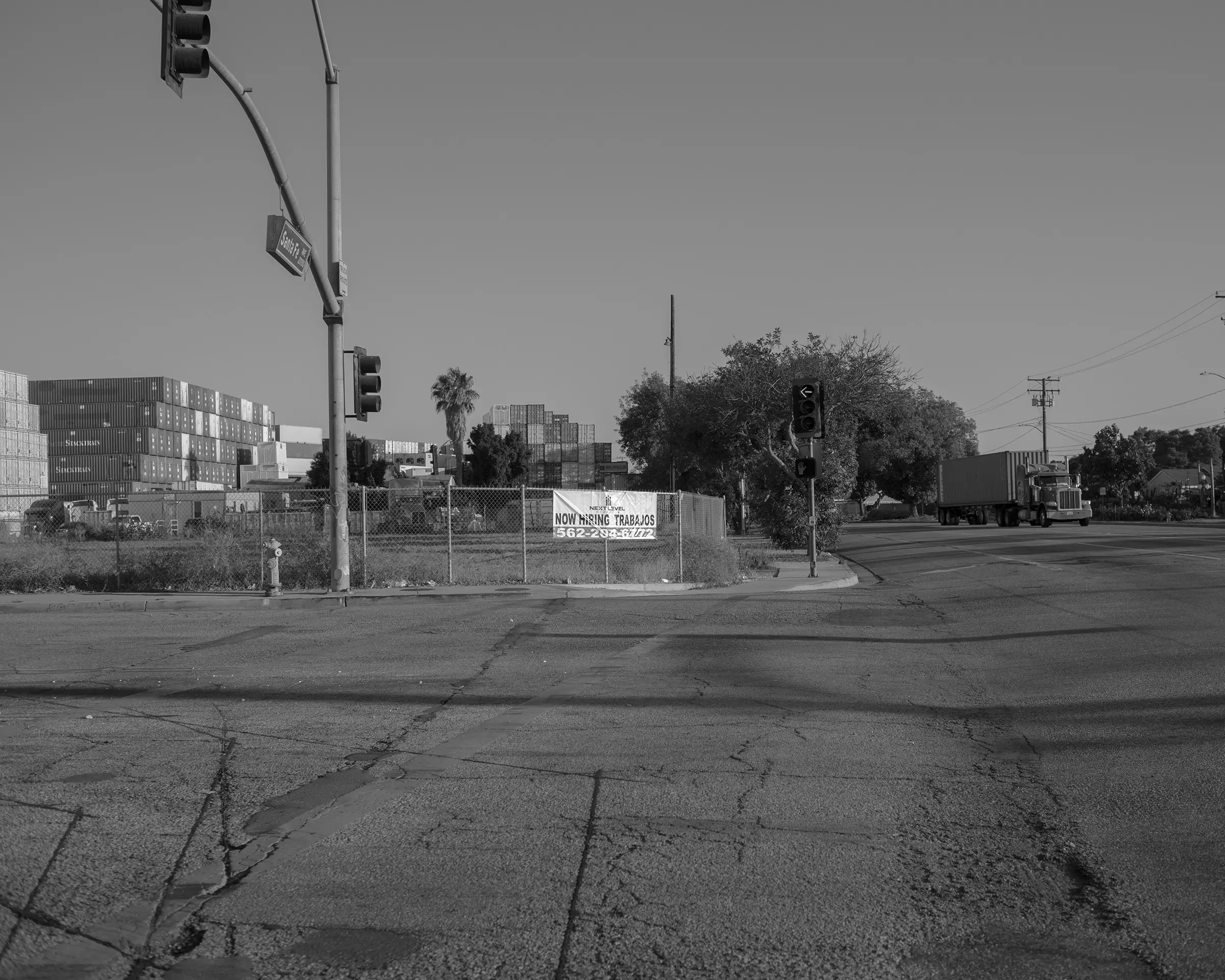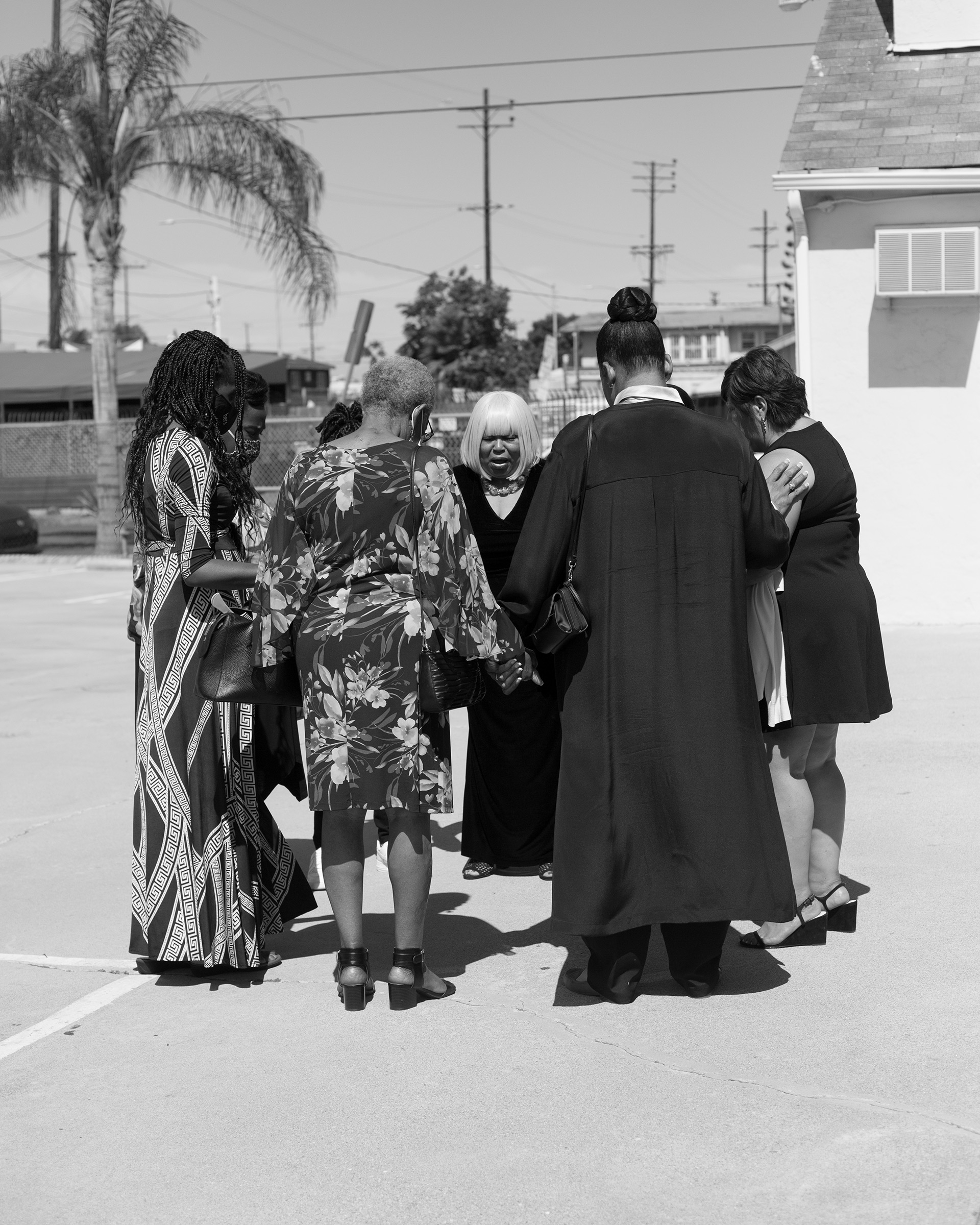One evening in early June, Leo and his family were able to enjoy a treat they hadn’t experienced in months: a sit-down meal at a restaurant.
At a fried chicken chain in a Compton, California strip mall, they splurged on a few plates of fried rice, each costing under $13.99. The money Leo, 39, makes as a mechanic never seems to satisfy the deluge of bills that pile up on his kitchen counter each month, so the modest meal felt like a luxury. “It made me very happy,” Leo says in Spanish through an interpreter.
The family was only able to afford the meal because Leo is part of a groundbreaking guaranteed income experiment in his city called the Compton Pledge. In regular installments between late 2020 and the end of 2022, Leo and 799 other individuals are receiving up to $7,200 annually to spend however they like. Leo, an undocumented immigrant from Guatemala who TIME has agreed to refer to by a pseudonym to protect his identity, receives quarterly payments of $900.
The organization running Compton Pledge, called the Fund for Guaranteed Income, is building the technological infrastructure necessary to distribute cash payments on a broad scale and has partnered with an independent research group to study the extent to which a minimum income floor can lift families like Leo’s out of poverty. The pilot, which distributes money derived from private donors, is not just about giving people the ability to buy small indulgences. It’s testing whether giving poor families a financial cushion can have a demonstrable impact on their physical and psychological health, job prospects and communities. And perhaps the biggest question of all: Can these cash infusions transcend their status as a small research project in progressive Los Angeles and someday work as a nationwide program funded by taxpayers?

The theory is gaining momentum in the U.S. Six years ago, there were no programs distributing and studying the effects of providing swaths of Americans no-strings-attached cash, according to Stanford’s Basic Income Lab, an academic hub tracking such programs. But now, pilot programs are taking place in roughly 20 cities around the country, from St. Paul, Minnesota to Paterson, New Jersey, with Compton’s exercise serving as the nation’s largest city-based experiment in terms of number of people served. Most of the programs are philanthropically funded—including Compton’s—and distribute different amounts of money to targeted populations, from Black pregnant women to former foster children to single parents. These laboratories for wealth redistribution all have one thing in common: they give some of society’s poorest and most marginalized people cold-hard cash, and then let them spend it however they want.
There is limited polling on support for nationwide guaranteed income programs, but 45% of Americans supported giving every adult citizen—regardless of employment or income—$1,000 per month, through a subtype of guaranteed income called Universal Basic Income (UBI), according to an August 2020 survey from Pew Research Center. Andrew Yang, who popularized the idea of UBI during his long-shot 2020 presidential campaign, wants the proposed benefit to replace most existing government welfare programs. Most other proponents of a guaranteed income in the U.S., however, resist being lumped in with his plan, believing instead that the cash benefit should supplement other forms of government assistance and target individuals who need it most.
If any form of a national guaranteed income were to advance beyond a talking point, it would mark a striking shift in how Americans view the role of government in society. Less restricted forms of cash assistance largely ended in the 1990s with President Bill Clinton’s welfare reform, as both Republicans and Democrats argued government benefits were disincentivizing work. The country’s social safety net in recent years has offered more limited relief through a patchwork of difficult-to-navigate programs, like food stamps and Section 8 housing vouchers, which often have stringent rules and leave many poor families ineligible. But after a year and a half of the pandemic, three rounds of stimulus checks and a newly expanded child tax credit, proponents of cash-based programs feel the tide turning. “This is an inevitable future,” argues Nika Soon-Shiong, the executive director of the Fund for Guaranteed Income.


Many of the country’s most significant social reform movements have been provoked by national crises, from the Great Depression’s birth of the New Deal to the 2008 financial crisis paving the way for the Affordable Care Act. Even if guaranteed income never catches on, economists and public officials may glean lessons about giving poor families financial breathing room from 2020’s pandemic relief packages and Joe Biden’s $3.5 trillion budget proposal, which includes a permanent expansion of the child tax credit and a paid family leave program for new parents. By one measure, U.S. poverty fell in 2020, largely thanks to federal aid aimed at helping people weather the worst financial crisis in decades, the Census Bureau reported in September.
But the window to enact major change closes quickly. Republican lawmakers have raised concerns that Biden’s $1.9 trillion stimulus package is feeding inflationary pressure and inciting labor shortages. It remains unclear whether Democrats will have enough support in Congress to make the assistance efforts they passed this year last beyond 2021. And despite the proliferation of guaranteed income pilots, cementing them beyond experiments funded through charity is proving tremendously politically challenging amid fears that such policies keep low-income Americans on the government dole.
That’s not how Leo sees it. While he used few bucks from Compton Pledge for a fried rice dinner, the rest of it went to more pressing causes: a $250 car diagnostic tool enabling him to take on more mechanic jobs, a college textbook for his 23-year-old stepdaughter Lesley, a few hundred dollars sent to his ailing mother in Guatemala, and payments towards a $3,000 payday loan that has accrued nearly $1,000 in interest fees in less than two years. The extra financial padding hasn’t kept him from needing to work, even through severe pain caused by his gout flare-ups. Leo, who does not have health insurance due to his immigration status, now also faces the daunting prospect of paying down a $10,612.80 hospital bill after a recent emergency room visit for chest pains that a physician linked to stress.
That stress has been building for a long time. Earlier this year, the mounting anxiety brought Leo to a Catholic church in downtown Los Angeles where he begged for a reprieve. “I asked the Virgin Mary for some sort of miracle,” he says from the covered patio outside his home that doubles as his stepson’s bedroom. Asked whether being selected to receive money from Compton Pledge was that miracle he was searching for, Leo replies with a grin: “Cien por ciento.” He feels 100% certain that it was.


‘There were no cockroaches’
Soon-Shiong, a doctoral candidate at the University of Oxford, initially planned to launch the Fund for Guaranteed income after completing her thesis on cash transfer systems in India. But the pandemic made her realize people much closer to home needed help—and fast.
“It really felt like there were not enough people thinking about the solution,” Soon-Shiong, the daughter of billionaire business tycoon and Los Angeles Times owner Patrick Soon-Shiong, tells TIME from her spacious West Hollywood apartment. “But a lot of people talking about the problem.”
She approached Aja Brown, who was finishing her second and final term as Compton’s Mayor, to create a program to bring monetary help to the struggling city, where 29% of inhabitants are Black and 68% are Hispanic or Latino. As Compton’s unemployment rate eclipsed 20% and thousands of residents fell ill with the virus—including many undocumented ones like Leo who lack health insurance—Brown and Soon-Shiong felt compelled to create an inclusive guaranteed income initiative. Unlike some forms of federal assistance, Compton Pledge would be open to undocumented immigrants and formerly incarcerated individuals. And rather than make marginalized people who are wary of giving strangers their home addresses and financial information apply for the program, Brown and Soon-Shiong used an advisory council to help them randomly select the Compton residents, including those the city government might not have records of. Starting in August 2020, Compton Pledge raised $9.2 million from donors including Amazon Studios and the California Wellness Foundation to go directly to the eventual recipients of Compton Pledge.
Compton certainly isn’t the only American city with inadequate resources, but its health and economic deficits are compounded by the absence of well-paying jobs and a high proportion of undocumented immigrants who lack health insurance. “The combination of all that leads to what we have here, which is an epidemic of poorly treated chronic disease,” says Dr. Elaine Batchlor, the CEO of MLK Community Healthcare, a hospital and healthcare system in South Los Angeles. An estimated 40% of adults in the 100,000-person city are considered obese, 12% of the adult population has diabetes, and residents are significantly more likely to die due to lung cancer, cardiovascular disease and chronic obstructive pulmonary disease compared to the surrounding county’s residents, according to data compiled by the LA County Department of Public Health.
Three out of the four Compton Pledge families TIME interviewed over the first six months they received checks expressed that they are battling some sort of chronic illness. In addition to Leo’s gout, his wife Brenda is diabetic, and their daughter Lesley is an asthmatic. Tiffany Hosley, a 40-year-old former paraeducator for Compton Unified School District, has been unable to work since she had a serious heart attack last October, and her insurance denied coverage for her $988 heart medication. Christine S., a 44-year-old transportation worker who asked TIME not to use her last name because she feared the money she gets from Compton Pledge could cost her other government benefits, also has a daughter with asthma. (Compton Pledge does not expect the funds to impact recipients’ eligibility for existing government support, but has set up a fund to reimburse participants in case they do. It has not had to use those reserves yet.)

The Fund for Guaranteed Income hopes these families can use the cash support to offset some of their medical expenses, and that the funds will also improve the recipients’ physical and mental health. Compton Pledge had promised in early press releases that Jain Family Institute, the independent research group it contracted to measure the success of the pilot, would be publishing data on the impact of the program at regular intervals, but it has not yet done so. Initial findings from a separate guaranteed income pilot in Stockton, California show promise, however. In March, the pilot reported that the recipients of its $500 per-month stipend showed statistically significant improvements in their mental health versus the control group, moving from likely having a mild mental health disorder to likely being mentally well. One year into the two-year pilot, Stockton recipients had spent 37% of their allotments on food, 22% on home goods and personal clothing items, and 11% on utilities. They spent less than 1% on alcohol and tobacco.
Beyond covering their own needs, some of the Compton recipients have committed to using the funds to pay it forward. That’s part of what the program’s organizers hope to demonstrate: that redistributing wealth through direct payments could improve access to education, housing and nutrition; reduce the racial wealth gap; and stimulate economic activity—which in turn can lift up a whole community.
Already, at least two members of the Compton Pledge have used some of their funding to start their own nonprofits. Georgia Horton endured molestation as a child, and after fleeing home with nothing but “five pieces of burnt bologna” she stole off the stove, she was arrested in the late 1980s for a murder she says she didn’t commit. During her 25-year prison stint, she became an evangelist preacher for her fellow inmates, and when she was paroled in 2017, she took that work to the greater Los Angeles area until the pandemic shuttered gathering spaces. The Compton Pledge funds posted to her account at just the right time: Horton was able to put her first $400 monthly allotment towards the tools she needed to preach the gospel virtually—namely, a new HP laptop and a ring light. With subsequent checks, she paid registration and notarization fees to launch a nonprofit, Georgia Horton Ministries, which will lead trauma-informed prison workshops and support other formerly incarcerated people.
Christine S. puts some of the $1,800 she receives quarterly towards feeding homeless individuals in Compton’s historic Lueders Park, inspired by her own past experiences with homelessness. She wants to purchase a mobile shower so homeless people don’t have to use garden hoses like she did. But the money she receives from the experiment has also helped her take her daughter Alex on a vacation to San Diego, where the toddler got to swim in a pool for the first time. “We didn’t have to get a super cheap hotel,” Christine says. “There were no cockroaches.” Without the Compton Pledge money, she says, “I wouldn’t have had the financial ability to do much.”


‘She was getting more money staying home’
A UBI providing every American adult $12,000 per year would cost the U.S. government more than $3.1 trillion per year — a sum equal to roughly 90% of all the money the federal government collected in revenue last year.
Guaranteed income advocates say wealth taxes, such as those advocated by Democratic Sens. Elizabeth Warren and Bernie Sanders, could make the math work—at least for a program that helps very low-income people. And they argue that while it takes money to invest in a larger social safety net, it’s more expensive in the long run not to. Providing health care for uninsured people cost the country roughly $42.4 billion per year between 2015 and 2017, according to an estimate from the nonpartisan Kaiser Family Foundation. People who can’t pay rent or other bills are likely to need other services the government will end up paying for, like housing assistance. Poverty is also strongly linked to incarceration, which costs taxpayers at least $80 billion per year.
But conservative economists don’t believe throwing more money at the problem is a solution, especially when the national debt is already $28 trillion. “We’ve been completely irresponsible since the 21st century arrived,” says Douglas Holtz-Eakin, former director of the Congressional Budget Office and president of the center-right American Action Forum. Holtz-Eakin is also worried about free cash feeding inflationary pressure. He says increases in the consumer price index in the last year can at least partially be attributed to the pandemic-era stimulus spending: “There’s no doubt in my mind that the American Rescue Plan and those checks that went out along with the other subsidies fueled the inflation we’ve seen,” he says.
There are political risks, too. Stockton Mayor Michael Tubbs, whose small city jumpstarted the recent boom of guaranteed income experiments in 2017, lost reelection to a Republican challenger by 13 points in the Democratic stronghold in 2020 after launching his pilot. Conservative criticism has only intensified as direct cash payments become more mainstream. And if Republicans and moderate Democrats are reluctant to give U.S. citizens free cash, many are sure to express even more opposition to giving this kind of government assistance to undocumented immigrants like Leo: Donald Trump was elected President in 2016 vowing to crack down on illegal immigration, and has falsely claimed undocumented immigrants drain public benefits.

During the height of the pandemic, Trump and many congressional Republicans supported stimulus checks to help Americans make it through the country’s economic collapse. By this spring, Democrats agreed to smaller checks and limited unemployment benefits when members of their own caucus, like Sen. Joe Manchin of West Virginia, demanded the relief be targeted toward those with lower incomes. And once Biden’s stimulus package passed, Republicans pushed back against the pandemic unemployment insurance, expanded child tax credit and other assistance measures. When California approved the nation’s first state-funded guaranteed income project in July, which will dispense $35 million in monthly cash payments to pregnant women and youth who have recently aged out of foster care, Republican Assemblyman Vince Fong of Bakersfield abstained from voting for similar reasons. The cash would “undermine incentives to work and increase dependence on government,” he told the Associated Press.
Some experts say these critiques don’t hold up to reality. “There’s little to no evidence” that the federally passed income support programs are leading to work shortages, says Mark Zandi, chief economist at Moody’s Analytics. Despite 26 states voluntarily ending supplemental unemployment insurance early, there was little difference in their employment numbers and workforce participation rate in July.
But if guaranteed income pilot programs explore how free money helps recipients, they’re also testing the ripple effects on the broader community, and some small businesses in Compton aren’t on board. Nearly half a dozen Compton businesses—including a taco truck, insurance shop, and a Chinese restaurant—told TIME that increased government benefits and cash programs were making it difficult for them to hire workers. “That sign has been out here for six months,” Roland Barsoum, the manager of a local auto insurance outlet, says of a ‘help wanted’ placard in his window. He hired two people to fill the clerical position, but neither lasted more than a few weeks. “One of them stayed for about a month,” he says, “but she was getting more money staying home.”

‘Breathing room’
For all the political pushback, guaranteed income programs are proliferating in the U.S. At least 40 new guaranteed income projects have started or been announced in the last six years.
Many of these new programs are trying to help populations with a specific need or historically marginalized communities. In Cambridge, Mass., for example, the guaranteed income pilot consists of single-caretaker households and is giving more than 100 families $500 per month for 18 months. St. Paul, Minnesota is helping up to 150 families whose finances were negatively impacted by COVID-19 with $500 monthly payments for 18 months. Oakland, Calif. is focusing on non-white residents and offering $500 monthly for 18 months to 600 families earning below the area median income. A group in San Francisco is partnering with the city’s Department of Health to give pregnant Black and Pacific Islander women $1,000 a month for the duration of their pregnancies and at least six months of the child’s life. And in Jackson, Mississippi, the Magnolia Mother’s Trust, now in its third cycle, is giving 100 Black mothers $1,000 for 12 months.
Support from wealthy tech moguls has spurred some of that growth. Twitter founder Jack Dorsey has repeatedly given to guaranteed income projects through his #startsmall initiative, including donations of $15 million to the Open Research Lab (formerly Y Combinator’s UBI project) and $18 million to Mayors for a Guaranteed Income, a group founded by former Stockton Mayor Tubbs that is funding many of the cash experiments. In March, New York University used $3.5 million from Dorsey to launch the Cash Transfer Lab, a center that will study the effect of such policies.
The focus on Black women in several of the programs is not a coincidence. “The data shows that Black women, Black mothers specifically, have been left out of opportunities for not only wealth creation, but opportunities for income in a way that the rest of this country has been allowed to succeed,” says Aisha Nyandoro, the chief executive officer of Springboard To Opportunities, the organization behind Magnolia Mother’s Trust. Black families have the second-highest poverty rate in the U.S. after only Native Americans, with 21.2% living below the poverty line, and 27% of Black families with single mothers living in poverty, according to U.S. Census Bureau data.
Proponents say that for guaranteed income programs to most effectively target these populations, they must break the stigma of accepting help that many poor Americans have internalized. In San Francisco, prospective participants said they feared being viewed as “welfare queens,” according to program organizers, and some mothers in Jackson described how important their independence is to their identity.
The promise of some relief from crushing financial stress can outweigh those concerns. “There always comes a time where you’re going to need help,” says Danel Paige, 28, a member of the Jackson program. Throughout the pandemic, she has been working as a Head Start teacher, attending graduate school and taking care of her two children, ages 8 and 3, while their father’s military job keeps him stationed several states away. The money from Magnolia Mother’s Trust has helped her keep up with her electric bill and her car payment, and she’s hoping she can save enough to move to a safer neighborhood after losing a loved one to gun violence earlier this year. “I’m trying to lead a different life for myself,” she says. “This money is a huge part of that decision.”
That Paige is getting closer—but not yet able—to leave her neighborhood isn’t shocking to the guaranteed income advocates who designed these free cash projects. The money was never intended to be a panacea. “It’s not going to solve all of the systemic challenges that this country has,” says Nyandoro.
Poverty persists, as do its root causes. But for the lucky 800 in Compton, the unconditional money is a breath of fresh air in a smog-laden city. “Having a guaranteed income and a poverty floor enables people to have breathing room to make better decisions for their families,” former mayor Brown says, “to be able to spend time to maybe be able to actually go on an interview, to be able to plan a few years in advance instead of having to live paycheck to paycheck.”
Such is the reality for Leo, at least until his quarterly checks stop coming. An extra $3,600 per year won’t pay off his payday loans, get him health insurance, or allow his family to rent a home that wasn’t converted from a former car garage. But the money has loosened the financial noose fastened around their necks. Like an old family mantra promises, they can finally breathe a little easier: “Dios aprieta pero no ahoga,” recites Leo’s daughter Lesley. In English: God squeezes but doesn’t choke.
-With reporting by Mariah Espada and Nik Popli/Washington and Leslie Dickstein/New York.
More Must-Reads from TIME
- Donald Trump Is TIME's 2024 Person of the Year
- Why We Chose Trump as Person of the Year
- Is Intermittent Fasting Good or Bad for You?
- The 100 Must-Read Books of 2024
- The 20 Best Christmas TV Episodes
- Column: If Optimism Feels Ridiculous Now, Try Hope
- The Future of Climate Action Is Trade Policy
- Merle Bombardieri Is Helping People Make the Baby Decision
Write to Abby Vesoulis/Compton, CA at abby.vesoulis@time.com and Abigail Abrams at abigail.abrams@time.com